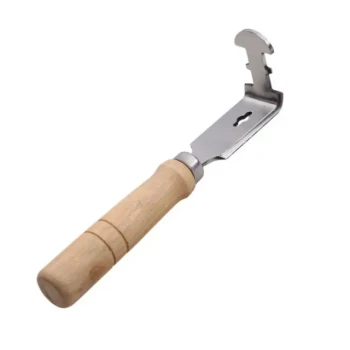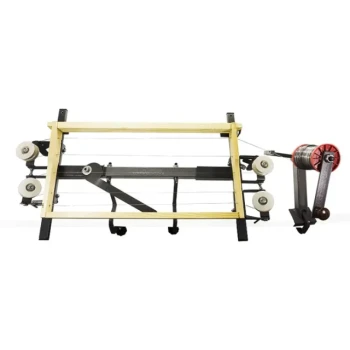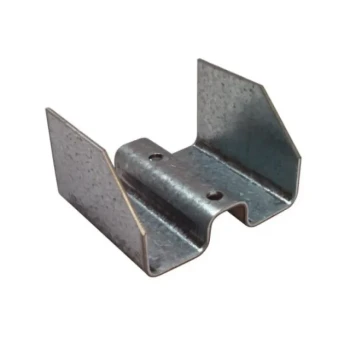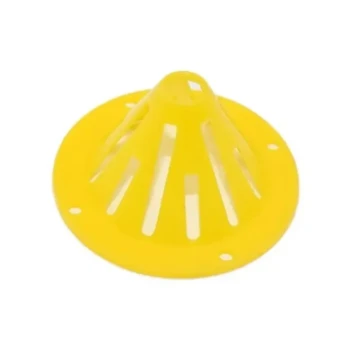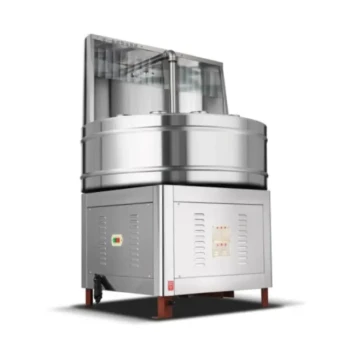To properly clean bee frames after scraping excess wax, you must scrub both the frame and the foundation thoroughly with the hottest water you can safely handle. After scrubbing away all remaining residue, rinse the frames completely and allow them to air dry in a shaded, well-ventilated area to prevent warping.
The goal of cleaning frames extends beyond simply removing old wax and cocoons; it is a critical biosecurity measure to sanitize the equipment and break potential disease cycles, ensuring a healthy environment for the next colony.
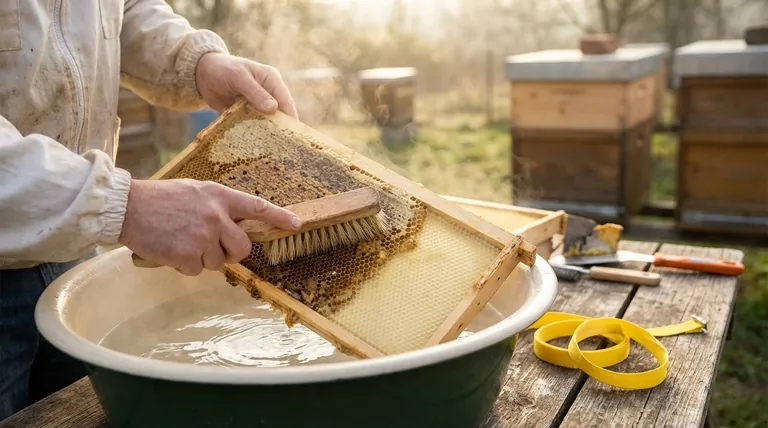
The Purpose of Thorough Frame Cleaning
Cleaning bee frames is a fundamental part of responsible hive management. It's not just about tidiness; it's about protecting the health and productivity of your bees.
Removing Pathogens, Not Just Wax
Old frames can harbor microscopic spores from pathogens like chalkbrood or even the more devastating American Foulbrood (AFB). A hot water scrub helps to physically remove and wash away these persistent threats.
Preparing for a Healthy Start
Bees are more likely to quickly draw out and utilize clean foundation. Providing a sanitized frame ensures the colony can focus its energy on expansion and honey production rather than house cleaning.
The Step-by-Step Cleaning Process
Once you have scraped the majority of wax and propolis from the frames, follow this simple and effective washing procedure.
Step 1: Prepare Your Cleaning Area
Work with the hottest water you can safely manage. A large utility sink or outdoor tub is ideal for this process. A stiff-bristled brush is essential for effective scrubbing.
Step 2: Scrub the Frame and Foundation
Submerge each frame and scrub it vigorously on all sides. Pay special attention to the corners of the wooden frame and the individual cells of the plastic foundation, as this is where debris and pathogens can hide.
Step 3: Rinse and Dry Correctly
After scrubbing, rinse each frame thoroughly with clean water to remove any dislodged particles. Stand the frames upright in a location with good air circulation to dry completely.
Common Pitfalls to Avoid
Proper cleaning is straightforward, but a few key mistakes can damage your equipment or fail to properly sanitize it.
Sun Exposure and Warping
Never leave plastic foundation to dry in direct sunlight. The heat from the sun, even on a mild day, can easily warp the plastic, rendering the frame unusable. Always dry frames in the shade.
Insufficient Drying
Ensure frames are bone-dry before storing them or placing them back in a hive. Any residual moisture can lead to the growth of mold or mildew, which is harmful to bees.
Using Harsh Chemicals
Avoid using soaps or chemical detergents. Bees are highly sensitive to residual scents and chemicals, which can cause them to reject the frame or even abscond from the hive. Hot water is sufficient and safe.
Applying This to Your Hive Management
Your approach to cleaning should align with the health status of the hive the frames came from.
- If your primary focus is routine maintenance for healthy hives: A thorough scrub with hot water is the perfect method to prepare frames for reuse or storage.
- If you are dealing with frames from a weak or dead-out colony: This cleaning method is a good first step, but consider it sanitation, not sterilization. For known diseases, more extreme measures are often required.
- If your primary focus is long-term storage: Complete and total drying is the most critical factor to prevent mold and protect your investment over the winter.
Properly cleaned frames are a cornerstone of proactive beekeeping that directly contributes to the long-term health of your colonies.
Summary Table:
| Cleaning Step | Key Action | Purpose |
|---|---|---|
| Preparation | Use hottest safe water & stiff brush. | Loosen wax and propolis effectively. |
| Scrubbing | Scrub frame and foundation vigorously. | Remove debris and disease spores from cells. |
| Rinsing & Drying | Rinse thoroughly; air dry in shade. | Prevent warping and mold growth. |
Protect your apiary's health with reliable equipment from HONESTBEE. Proper frame cleaning is essential for biosecurity, and it starts with durable, easy-to-clean frames and foundations. As a trusted wholesale supplier to commercial apiaries and beekeeping equipment distributors, HONESTBEE provides the high-quality tools you need for effective hive management. Contact our experts today to discuss your wholesale needs and ensure your colonies have a healthy foundation.
Visual Guide
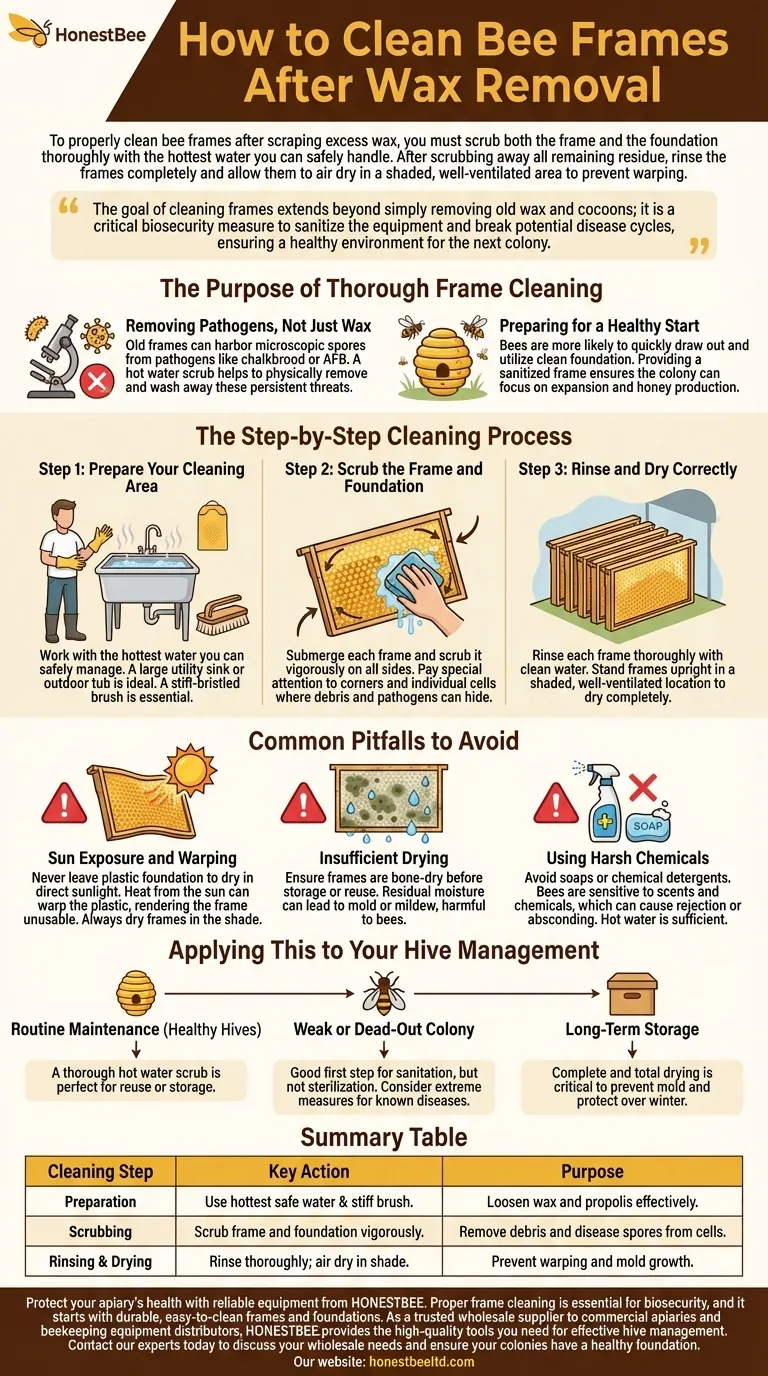
Related Products
- Professional Galvanized Hive Strap with Secure Locking Buckle for Beekeeping
- HONESTBEE Professional Bee Frame Machine for Side Bar Shaping
- Professional Stainless Steel Frame Cleaner with Ergonomic Wood Handle
- Professional Wide Blade Honey Scraper for Beekeeping and Honey Processing
- HONESTBEE Bee Frame Side Bar Forming Machine Precision Engineered for High-Volume Production Bee Frame Machine
People Also Ask
- What are the types of Emlocks available? Choose the Right Strap for Hive Security
- What are the two styles of hive straps? Choose the Right Strap for Your Hive Security
- How should a cam buckle strap be installed for optimal performance? Master the Leverage for Maximum Tension
- How can beekeepers secure the top cover of a hive? Protect Your Colony from Wind and Weather
- What are hive straps and why are they used? Secure Your Hives Against Wind, Predators, and Transport


